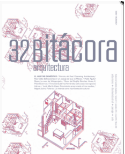The purest definition of architecture suggests that the possibility of dwelling is the characteristic that distinguishes it from the other arts and, as a result, becomes part of its most basic definition. This is, however, a characteristic that escapes architecture’s control since it depends solely on users’ abilities to appropriate space –something that can’t be scientifically measured or known ahead of time. This contradiction is particularly expressed within the condition of domestic dwelling.
We have to question the contemporary meaning and possibility –or impossibility– of dwelling in a world where to reside is not limited to having a street address, where one spends more time commuting than at one’s own home, where thousands of people migrate to other lands because of political or economic reasons, and where our relationships with other people take place in the virtual space of social networks. Today, the complex characteristics of modern urban life at the turn of the twentieth century described by thinkers like Benjamin –who referred to Baudelaire and his obsession of constantly moving as the paradigmatic example– have been transferred to the domestic space in many ways. The traces have become even more diffuse.
In our present, domestic dwelling within Latin American contexts inevitably seems to be related to the great problem of social housing. Before philosophically addressing the meaning of dwelling, considerations turn to the real problems of our cities. This shouldn’t surprise us, after all, about half of the population –at least in Mexico– lives in squatter settlements; “homes,” but of substandard conditions.
Based on experiences that emerged in the sixties, we have seen new creative ways to understand the endowment of social housing in the last few years. In any case, the increasingly obvious insertion of the subject that experiences domestic space as a way to evaluate the architectural work; the careful study of that experience as raw material for design; in addition to the participation of the user in the design and construction process are strategies to disarming architecture as an artistic practice –to leave its very traces in the very matter that makes up the home. These appear to us as possibilities for dwelling in the present. Despite this, many of these cases lack a critical evaluation.
DOI: https://doi.org/10.22201/fa.14058901p.2016.32
Published: 2016-08-26

